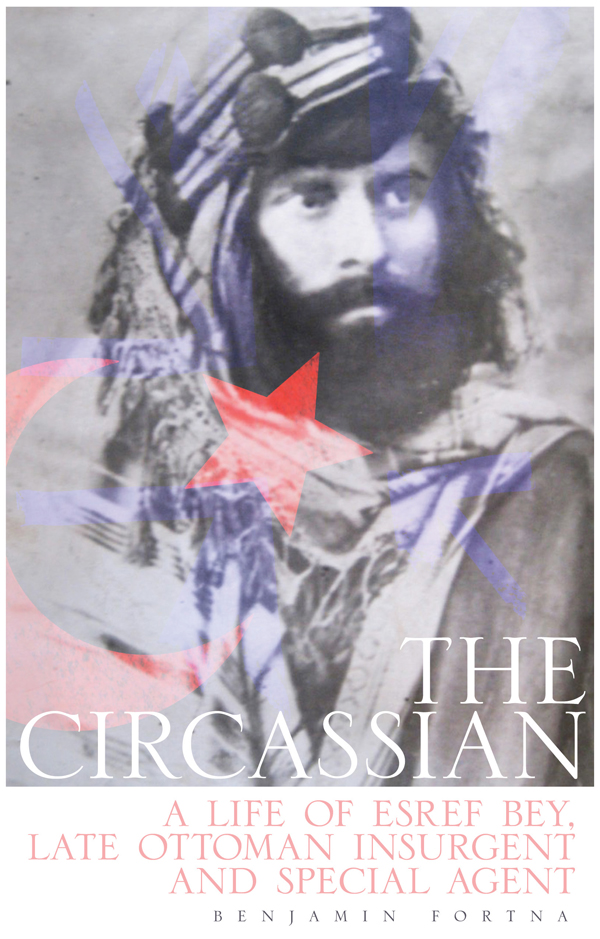
Author: Benjamin C. Fortna
Publisher: Hurst & Company
Year: 2016
Pages: 341
ISBN: 9780300180282
Source: https://www.hurstpublishers.com/book/the-circassian/
Much is owed to Professor Fortna’s scholarship for a sympathetic and many-layered biography of Eşref Kuşçubaşı, a heroic officer in military intelligence in the late Ottoman period. It is a work of scholarship with unusual insights into modern Turkish history, and the role played by Eşref and his colleagues in the covert operations unit of the Ottoman military when facing the European powers and internal upheavals..
Eşref belonged to the founding cadre of the Teşkılat-ı Mahsusa, the special operations paramilitary unit. He was on active service in the 1911-12 Italian-Ottoman War (in Trablusgarp, Libya) , the 1912-13 Balkan Wars and the Great War 1914-18. The author provides rich contextual detail of the final years of the Ottoman High State (الدولة العليا العثمانية – a much preferable term to ‘Ottoman Empire’).
During the campaign in North Africa, he “was given the crucial tasks of keeping the tribes on side,organising their military training, and coordinating their attacks with the overall Ottoman command structure.” Working closely with fighters of the Sanusi Order, he led the campaign in the Sayyid Abdullah Mountains in the region of Derne. His military superiors at the time were Enver Pasha and Mustafa Kemal, with whom he was to have a long-lasting, not always amicable, relationship.
At the outset of the Great War, Eşref was sent on missions aimed at keeping the main tribal leaders in the Arabian Peninsula on the Ottoman side. He was later part of a detachment posted to the Sinai and saw action in the Ottoman advance to secure the Suez Canal. He was then transferred to the front in Syria under the orders of Enver Pasha, now Minister of War. His specific assignment was to counteract British influence in the Hejaz.
Eşref was captured by the forces of Sherif Hussein of Mecca in January 1917 in a battle near Khaybar. The British were cock-a-hoop. For the Arab Bureau in Cairo, “it was a sign that the tide was turning against the Ottomans.” The over-rated British intelligence officer, T.E. Lawrence, was in a Sherifian camp when the news broke. Fortna captures the scene, “After dinner he [Lawrence] noticed a commotion: A breathless slave thrust his head under the flap crying, ‘News! News! [. . .] Abdullah [Sherif Hussein’s son] has captured Eşref Bey’. Then I knew how big and good the event was’.”
Abdullah tried to win him over on the side of the Arab Revolt but Eşref refused. He was then handed over to British military intelligence in Cairo for interrogation and then held as a prisoner of war held in Malta. This gave him time to write his memoirs, that were stored with other papers in a trunk. This was the treasure trove that Professor Fortna was able to track in the home of Eşref’s descendents in the Aegean region.
The biography notes the efforts that have been made to disparage Eşref. Firstly, for Western historians, his name was linked to the fate of Armenians in Van and related areas in Eastern Anatolia in 1916. This is based on the interrogations in Cairo, conducted by the Turkish-speaking Wyndham Deedes. Eşref’s response to the Armenian allegations was characteristic of the man: “I am a member of the armed forces, and I fight against other armed forces. Even in the smoke of battle I am a servant of humanity, and I serve it with all my energy [, , ,] if our government had given orders for the massacre of Armenians, not one of them would be alive in Istanbul or the rest of Anatolia.”
Secondly, in the course of the Independence War of 1920 and its aftermath, the Kemalists wrote him out of Turkish history. Benjamin Fortna captures the tensions brilliantly,
Eşref initially fought with the national forces but parted ways with the leadership coalescing around Mustafa Kemal, later known as Atatürk, and switched sides along with a number of officers of Circassian descent [. . .] Given the almost monopolistic Kemalist control over the foundational writing of Turkish history, however much its grip has begun to loosen in recent years, Eşref has routinely been referred to as a “traitor to the nation” (vatan haini), Attempts to write Eşref back into a history from which he was excluded by the long-dominant Kemalist approach were taken to be affronts to the established version.
Mustafa Kemal portrayed his opponents as pro-Greek with some justification, because a Circassian break-away effort in 1921 did seek autonomy under Greek protection. However, Eşref was not party to this. He reflected in his memoirs, “I was an Ottoman, a Turkish-speaking Muslim, and not a Circassian dreaming of Daghestan”. Fortna notes that “he was also clearly highly loyal, especially to Enver (Pasha, Mustafa Kemal’s main rival). Stubbornly, it seems, he refused to throw his lot with the new power base being constructed by Mustafa Kemal.” Branded an enemy of the state, he spent years in exile in Europe, Crete and Cairo. He refused the pardon issued after Mustafa Kemal’s death in 1938, “defiantly arguing that he had done nothing wrong so could not accept a pardon.” He eventually returned in 1950 and died in 1964 in the land he loved. It was apt that the legendary early cadre of the Teşkılat-ı Mahsusa described themselves as the “self-sacrificing officers” – fedai zabitan.
Related Links: Ali Allawi’s: Biography of Faisal I.
JS, July 2022
